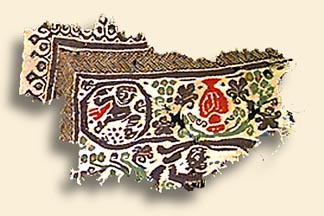

|
CAS 0389-2385 |
|---|

It is very rare for ancient textiles to survive in the archaeological record because fabrics decompose easily. Many Coptic textiles have survived because they were preserved in the dry desert tombs of Egypt. The large number of Coptic textiles located in museums and collections throughout the world make the Coptic period one of the most fully documented eras in textile history. However, the Coptic period of Egypt is often overlooked in favor of the more studied periods of the ancient pharaohs and the Arab conquest.
The name Copt derives from the Arabic word "Qibt" for Egyptian, which was taken from the Greek word for Egyptian, "Aigyptos." The term "Copt" originally referred to the native Egyptians, as opposed to the Greek or Arab invaders. While later "Copt" became a religious designation referring to Christian Egyptians, the Coptic period is considered to be confined to the first millennium of the Christian era, when Christianity thrived in Egypt. Thus, Coptic textiles are the products of the Egyptians, who may or may not have been Christian, and who lived in the beginning of the Christian era.
The Rietz Collection of Coptic Textiles was collected by Carl Austin Rietz in the mid-20th century. Comprised of over 75 textile fragments, the Collection is housed in the Department of Anthropology at the California Academy of Sciences. For more information on Coptic textiles and this collection, click on one of the links below.
All of the Coptic textiles in the Rietz collection have been photographed and are available in our Online Collection Database. To view these images, search on Category: "Textiles" and Culture: "Coptic."
| Coptic Textiles Home | History of the Copts | Coptic Stylistic Groups | Coptic Weaving Technology |
| Coptic Textiles Collection | Resources | Online Exhibits Home | Anthropology Home |